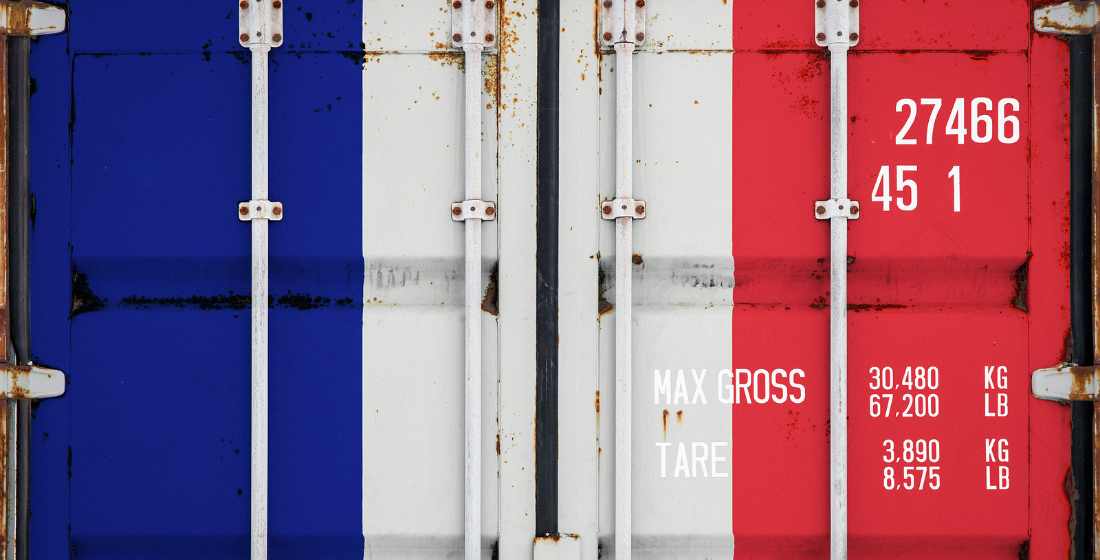SFIL liquidity helps French exporters secure a better global playing field
Philippe Mills, chief executive officer of SFIL, the French public development bank, talks to Jonathan Bell about how the French agency is making a difference on the French export front.

TXF: What is the primary purpose of SFIL, and how does SFIL differ from agencies in other countries – such as SEK in Sweden?
 Philippe Mills (PM): SFIL Group is a public development bank with two public policy missions: a) since 2013: to provide long-dated funding to the French local public sector, and b) since 2015: to refinance export loans guaranteed by the French state. Our first responsibility is to address market failures. We are also a stabilising public instrument for dealing with economic crises. Therefore, SFIL was established in 2013 following the 2008-2012 financial crisis.
Philippe Mills (PM): SFIL Group is a public development bank with two public policy missions: a) since 2013: to provide long-dated funding to the French local public sector, and b) since 2015: to refinance export loans guaranteed by the French state. Our first responsibility is to address market failures. We are also a stabilising public instrument for dealing with economic crises. Therefore, SFIL was established in 2013 following the 2008-2012 financial crisis.
Since it was set up in 2013 SFIL has provided €24 billion ($26.7 billion) in new loans to the public sector, with maturities between 10 and 30 years. Within the export credit market, with over €7 billion of loans refinanced since June 2016, SFIL is the leading liquidity provider (45% market share) for the refinancing of French export loans.
SFIL’s business model in the area of exports is in fact very close to SEK: we act as refinancer via a true-sale set-up where the uncovered part of the credit risk is borne by the commercial banks. We complement banks liquidity by providing funding on long maturities, for large amounts at cheaper costs. We have the same collaborative approach, both with the export credit agency (ECA) and with the commercial banks who are in charge of arranging the loans. And we share the same final objective: supporting our national industry and its customers.
One small difference is that SFIL targets only large export credits, ie above €70 million, where liquidity starts to become constrained. What we have observed is that the greater the size of the credit, the greater the appetite of the commercial banks to use SFIL’s refinancing scheme. For smaller credits, in case of insufficient appetite stemming from private banks, exporters and borrowers can rely on the offer of Bpifrance Financement.
TXF: How does SFIL collaborate with other entities when working on deals, and what type of deal structures do you tend to be involved with?
PM: We have no priority sectorial or geographic restriction as long as BPI AE gives a credit cover. There is no restriction either on the borrowing structure: we can work with any security package requested by the ECA, the borrower being a sovereign, a public sector company, a corporate or a special purpose vehicle for project finance deals. We can however limit our appetite for certain deals due to size considerations or even refuse some deals due to compliance issues.
The commercial banks solicit SFIL once they are informed of potential opportunities. We have agreements in place with 25 banks, which are the major French and international banks active in the French export credit market. Of these, 15 of them have already used SFIL in at least one transaction and some of them have used it five times or more in the last three years.
Since we started, we have done 12 deals; of which four are in the cruise sector, three in the defence sector, two in the power sector, two in infrastructure, and one in oil & gas. In terms of volume, cruise and defence represent however the bulk of the portfolio and will certainly continue to do so in the future. We are currently working on transactions in the sectors mentioned above, but also in the space and nuclear sectors, where French industry is also very active. In terms of geographies, those 12 deals are split with four in Africa, three in Europe, three in the Americas and two in Asia/Middle East.
TXF: It's been two years since the French ECA Coface transitioned to Bpifrance. How did SFIL's role change through this process, and where are you now in terms of supporting the ECA?
The transfer from Coface to Bpifrance occurred quasi at the same time as the start of SFIL in the export credit business. In fact, both decisions were part of a broader initiative of the French government to enhance the competitivity of the French economy. From an operational angle, the intervention of SFIL generates small amendments to the standard documentation and processes of Bpifrance. After the first deals that were ‘prototypes’, the common aim of SFIL and BPI is that putting a SFIL refinancing in the BPI insured credit should be as smooth as possible for all stakeholders - the banks, the exporters and the borrowers. To achieve that, the teams of each entity meet together on a regular basis to improve their day-to-day cooperation.
We can also work together on deals that are on a very preliminary stage. Then both entities can issue a letter of interest. If the project is not finalised enough for a detailed financing offer to be presented to the customer, such an indicative letter of interest can give comfort to the customer. This is based on the availability and the competitiveness of the prospective financing solution considering the willingness of both entities to support the project in terms of credit risk for BPI and of liquidity for SFIL. SFIL has supported 24 projects so far.
TXF: SFIL has been very successful with its bond issuances over the past year or so. What sort of investors have you attracted, and can you explain how important this diversified pool is to your operations and goals?
Having a large and diversified investor base is key for us to be able finance local public sector investments and large French export contracts at the best possible conditions. Since SFIL was set up in 2013, more than 500 different investors have participated in bond transactions from the group.
Overall, we have the advantage of having a very well-diversified funding mix. SFIL is active as a regular benchmark issuer in both EUR and USD in the agency market with a focus on medium-term maturities. We regularly have a strong participation from central banks in Asia and from the Americas. Issuing in USD has been a very important step to broaden our investor base. In addition, SFIL bonds benefit from the same treatment as government bonds for the liquidity coverage ratio and we regularly have strong demand from bank treasuries for our transactions.
CAFFIL is the leading public sector covered bond issuer with a focus on long maturities. CAFFIL covered bonds are benefiting from two AAA ratings which makes these bonds particularly interesting for long-dated investments by insurance portfolios. In addition, we issued our first social bond transaction in February which was very well received by investors. With a size of €1 billion, it attracted 114 different investors and was 2.6 times oversubscribed. Looking ahead, we will be regularly issuing green bonds and social bonds which will help us to further widen our investor base.
TXF: What do you expect in terms of evolution regarding the financial markets and the monetary policy?
At the TXF Paris conference in February this year, I shared my conviction that we have entered a period of low rates, and that there would be no increase of the ECB's policy rate until at least the end of the year. And yet, at the last ECB Monetary Policy Committee meeting on 7 March, it announced that its policy rates would remain unchanged "at least until the end of the year".The reasons I had given at the TXF conference have not changed and have even increased, especially with the global economic slowdown and the uncertainties over Brexit and the trade confrontation between China and the United States. Inflation also remains too low.
Finally, with the rise of populists in Europe and European elections, obviously the ECB is pragmatic and wishes to avoid any economic shock. Besides, the ECB is in line with the FED's attitude to support the economy. So, we entered a new era of low rates for a while, it wasn't temporary.
TXF: You mention Brexit, so how do you see the fluctuating geopolitical situations across Europe, for example in the UK and Italy for example, impact French exporters, and where does SFIL sit amidst this?
Nowadays, the concerns about Brexit and Italy are very different. The Italian situation has got slightly better. The government is working more closely with the European Commission and budgetary compromises have been reached. The situation is very different from the previous sovereign crisis. To give a comparison, let us remember that in the summer of 2012 the Italian 10-year bond reached 7.62%, or 638 basis points (bp) above the German Bund. Currently, and thanks in particular to the ECB's action, the Italian 10-year bond is only around 250 bp above the Bund (or 2.5% in nominal terms).
On the opposite side, Brexit is more and more complicated. It is a situation of insecurity. The new ‘latest’ date for the United Kingdom to leave the EU is 31 October. For the British government and also for the British Parliament, the message sent is contradictory: on the one hand, more time to reach agreement; on the other hand, the need to move quickly, because who can prejudge the political balances in the country after the European elections. Also, the political crisis in the United Kingdom is a very deep and durable one. This means that the British will be called for elections to the European Parliament at the end of May. So, if the possibility of a ‘no-deal’ decreases, the British will participate in the new European Parliament, the new European Commission and therefore in the new European semester. The situation will thus always be very complicated to deal with.
In conclusion, the European Union unfortunately still remains paralysed by this Brexit. I nevertheless still have confidence in governments to anticipate the consequences, both economic and administrative, especially for exporters.
TXF: With regard to targeting foreign markets and assisting French exports are there any industrial sectors and specific markets that SFIL will be leaning towards over the next few years?
Currently there are five industrial sectors which represent 90% of the demand for French export credit: defence, cruise vessels, energy, space and transportation. This break-down is also consistent with SFIL’s recent track-record and with the pipeline of deals for which commercial banks have consulted SFIL. In this pipeline of 88 active deals, representing €24.5 billion, 28% are in the defence sector, 27% within infrastructure and energy, 18% transport, and 14% space & telecoms. The cruise sector is not represented at present, as far as deals closed so far, but it is expected that new opportunities will materialise during 2019.
If we look at it from a geographic standpoint, Africa (with 32% of the pipeline) should be the new frontier, followed by Europe and the Middle East with 24% each of the pipeline. The characteristic of the African deals is that they are usually of smaller size, and take longer to materialise, nevertheless we hope to see significant projects in the continent in the coming years. SFIL has identified 33 major exporters, who can benefit regularly or occasionally from SFIL’s refinancing and we have developed a close relationship with them. A partnership has developed with the more usual users like Chantiers de l’Atlantique or General Electric France for example.
The new Strategic Project Guarantee developed by BPI, and for which SFIL is in the process to obtain the last approvals for its intervention, will probably enlarge the scope of sectors which can benefit from our support. Our target is to stick as much as possible to French industry needs in terms of support for financing, which is the reason why we have developed intensive interaction with exporters. We will continue with this approach, for both the export credit side and for the strategic projects.
TXF: What do you see as the biggest challenges facing French exporters at the current time?
Today one of the biggest challenges facing not only French exporters, but most OECD economies exporters, is the competition from non-OECD countries. On top of their industrial capacity, these ‘new’ exporting countries have developed their capacity to support their exports on the commercial/diplomatic front, but also on the financing front. Some of them, like China, but also Russia for specific sectors like nuclear, dedicate a huge financing capacity to this support.
The big challenge for OECD countries is that these new exporters do not play with by same rules, do not face the same set of regulations, and do not have the same approach regarding environmental and social responsibility, financial security and compliance. This contributes to create an uneven playing field where the OECD arrangement has played a role of moderator for more than 40 years. In this new framework, the question will be how to adapt to face this competition, but also how to cooperate with them?





